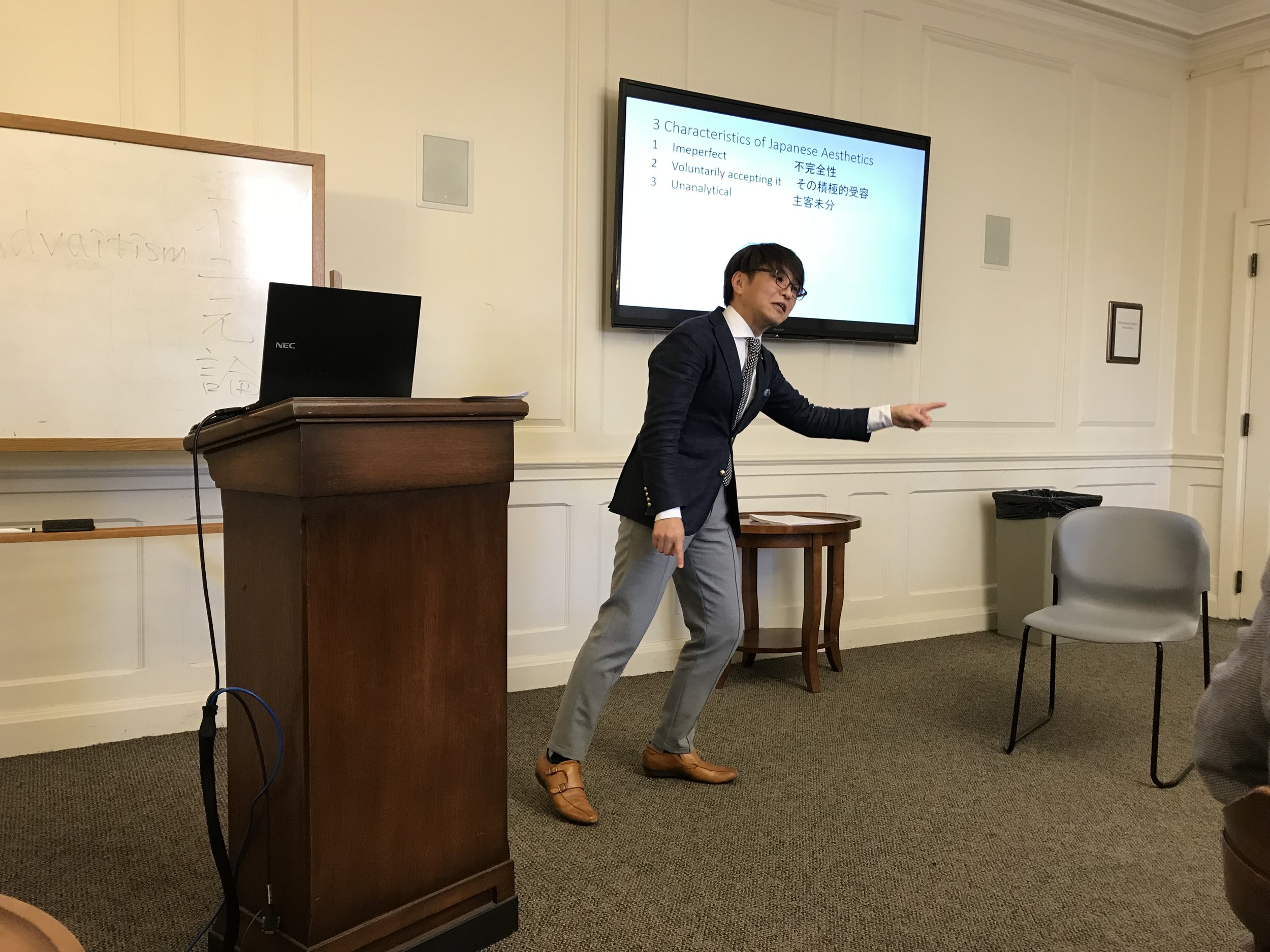Prof. Itō Ujitaka, Meiji University, “From Mononoaware to Kawaii, What Are Commonalities in Elements of Japanese Aesthetics?” 「もののあわれ」から「かわいい」まで—日本の美意識に通底するもの」
Wabi, sabi and mononoaware are often referred to as uniquely Japanese aesthetic categories. Similarly, kawaii is seen today as such a Japanese category all over the world. There seems, however, to be no relationship between wabi, sabi, and kawaii. While the former is old and hard to understand except in Japan, the latter is new and understood worldwide. Here I want to consider, is there any similarity or relationship between these categories of what we call Japanese aesthetics?
Similarities can be seen by looking at characteristics of mononoaware. As Motoori Norinaga stressed, mononoaware is the mainstream of Japanese aesthetics, and wabi and sabi, and kawaii, are branch streams of that mainstream. In this talk I will consider the question, what are the central characteristics of mononoaware, and are they different enough from Western aesthetic categories to be “peculiarly Japanese”?
日本固有の美的範疇としてよくとりあげられるものに、「わび・さび」、あるいは「もののあはれ」がある。一方で、「かわいい」は日本発信の美意識として世界に広がりつつあるが、「わび・さび」と「かわいい」は正反対の美であるように見える。「わび・さび」は古く、「かわいい」は新しい。「わび・さび」はなかなか日本以外では理解されにくく、「かわいい」は世界で受け入れられている。では両者の間になにか関係はあるのだろうか。同じ「日本美」として括ろうとするときに、通底するなにかを見出すことができるのだろうか。
最も古いとされる日本美であるところの「もののあはれ」の特性を考えるときに、一見まったく反対に見える「わび・さび」と「かわいい」との間に共通するものが見えてくる。おそらく本居宣長が言ったように、「もののあはれ」こそが日本の根源であり、とすれば、「わび・さび」も「かわいい」も、同じ本流から分かれる二本の支流にすぎない。
では、「もののあはれ」の中心にあり、他の美的範疇に共通する特性とはなんだろうか。そしてそれは果たして、すぐれて「日本的」と言えるほどに西洋の美的範疇と異なっていると言えるのだろうか。
Talk Notes



